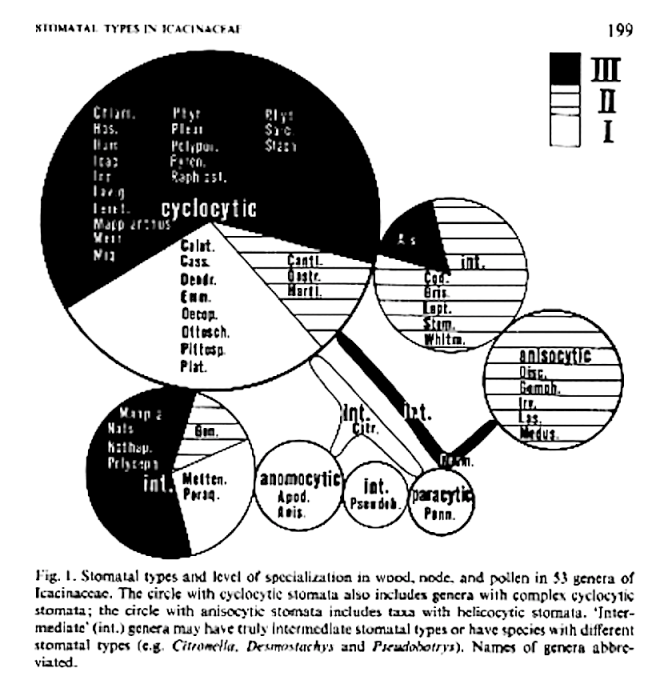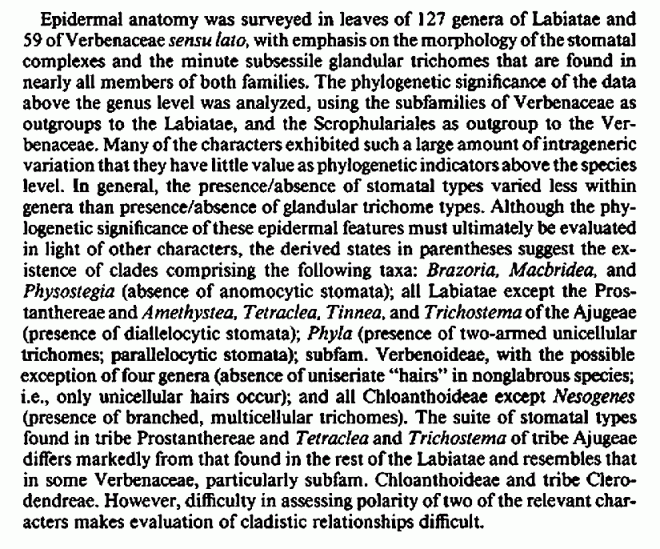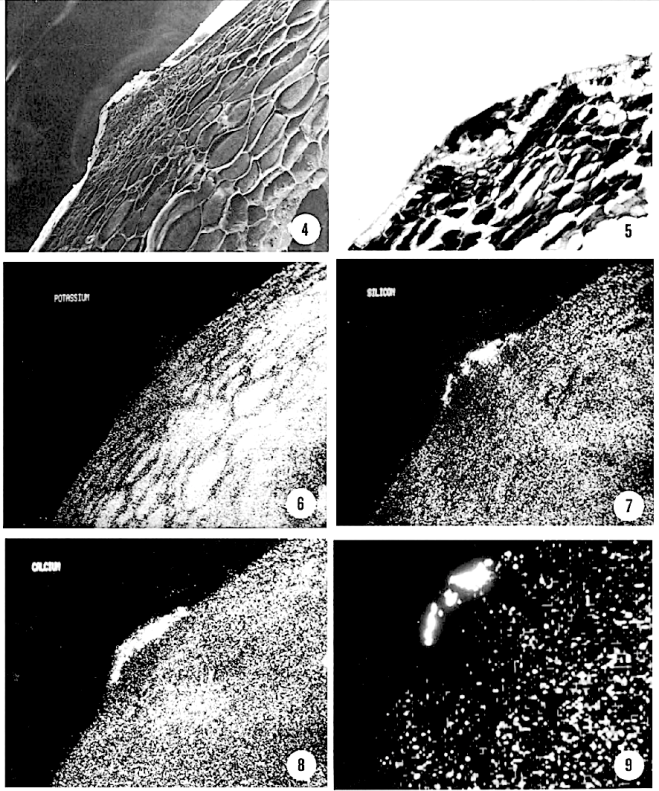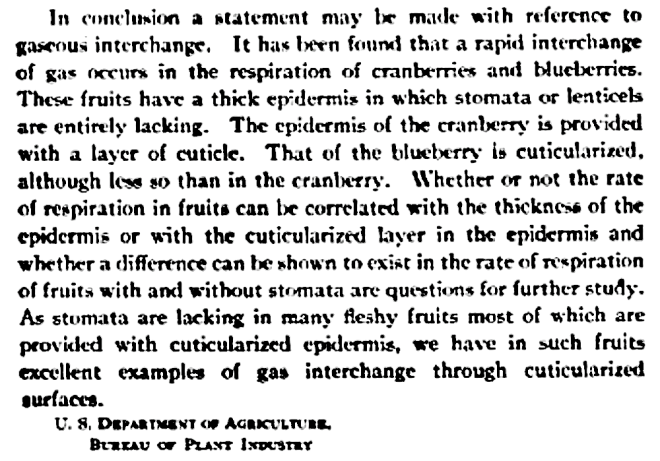Stomatal types in Icacinaceae additional observations on genera outside Malesia
by Baas P. (1974)
Pieter Baas  Nationaal Herbarium Nederland
Nationaal Herbarium Nederland
in Acta Botanica Neerlandica, , Issue 3,193–200, June 1974. –
http://natuurtijdschriften.nl/download?type=document&docid=540005
http://onlinelibrary.wiley.com/doi/10.1111/j.1438-8677.1974.tb00936.x/abstract

Summary
The stomatal types of most Icacinaceous genera (28) outside Malesia are reported for a limited number of species.
In addition to the stomatal types recognized in Malesian Icacinaceae in an earlier paper, complex cyclocytic stomata are recorded in some genera, notably Leretia, for the first time.
A fairly comprehensive survey of the genus Citronella indicates some trends of differentiation between the Asiatic and Pacific species and the American and Australian species. The results are further discussed with reference to previous hypotheses on level of specialization and stomatal types.
4.1. Taxonomic aspects
The stomatal type alone does not provide sufficient arguments for taxonomic discussions on or above the genus level in a family like the Icacinaceae, in which the diversity is so great and in which intermediatetypes occur in a considerable numberof genera. Within the genusCitronellathere is, however, an interesting diversity, partly correlated with the subdivision into two sections proposed by Howard (1942). Howard recognized section Eucitronella consisting of New World species and section Eucharissia consisting ofOld World species. Sleumer (1971) challenged this subdivision because the distinguishing characters are “rathervague or do not hold” (l.c., p. 4). Of section Eucitronella I studied all species except C. melliodoraand C. ilicifolia. In most species the stomata are Material studied Specialization level Stomatal type(s) Notes Metteniusa nucifera (Pittier)Sleum. I Venezuela, Steyermark 95924 anomocytic to cyclocytic neighbouring/subsidiary cells not submersed Oecopetalum mexicanum Greenm. & Thomps. Mexico, Matuda 2437 (K.) I cyclocytic subsidiary cells partly submersed Ottoschulzia cubensis (Wright) Urban Cuba, Ekman 7425 (K) I cyclocytic to complex cyclocytic subsidiary cells notor hardly submersed Pleurisanthes parviflora (Ducke) Howard Brazil,Krukoff 6954 (U) m cyclocytic subsidiary cells partly submersed PolycephaliumpoggeiEngl. Zaire, Louis 6682 in anomocytic to cyclocytic neighbouring/subsidiary cells not submersed Poraqueibaguianensis Aublet French Guiana, Oldeman B 675 I anomocytic to cyclocytic neighbouring/subsidiary cells not submersed P.paraensis Ducke Brazil, Burchell 9590 I anomocytic to cyclocytic neighbouring/subsidiary cells not submersed Raphiostylis beninensis (Hook f.) Planch. Zaire, Louis9524 in cyclocytic to complex cyclocytic subsidiary cells not or hardly submersed R.ferruginea Engl. Cameroons,Zenker 2978 in cyclocytic to complex cyclocytic subsidiary cells not or hardly submersed Stachyanthus zenkeri Engl. Cameroons,Zenker 1093 hi cyclocytic subsidiary cells partly submersed 198 P. BAAS cyclocytic, with the exception of C. megaphylla in which a majority is paracytic with frequent subdivisions perpendicular to the pore in the subsidiary cells, often resulting in a cyclocytic appearance. Of section Eucharissia all species have now been studied (see also van Staveren & Baas), and in 7 of the 9 species the stomata are paracytic with occasional to fairly frequent subdivisionsparallel to the pore (however, much less frequent than in C. megaphylla), and only in the two species from Australia, C. moorei and C. smythii. the stomata are mainly anomo- to cyclocytic with only few paracytic ones. So, the stomatal type does not absolutely support Howard’s subdivision of the genus, but certainly indicates a trend of infrageneric differentiation into three groups of species; American, Australian, and Malesian and Pacific species.















 Nationaal Herbarium Nederland
Nationaal Herbarium Nederland



You must be logged in to post a comment.